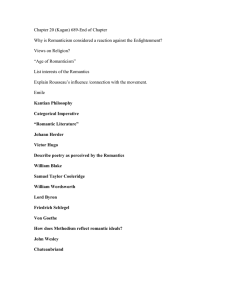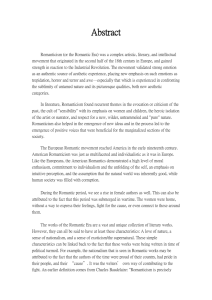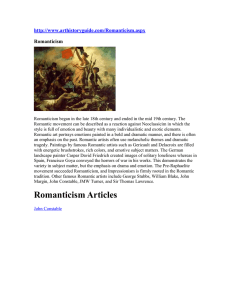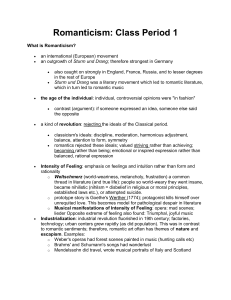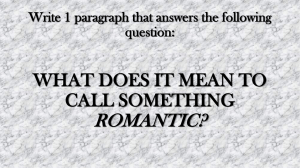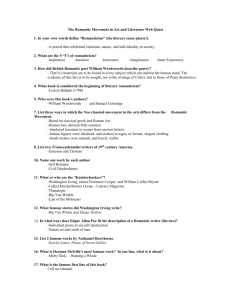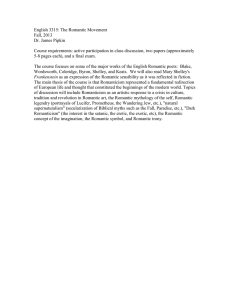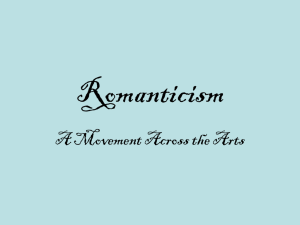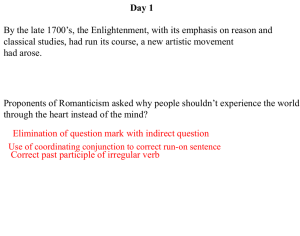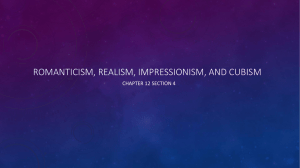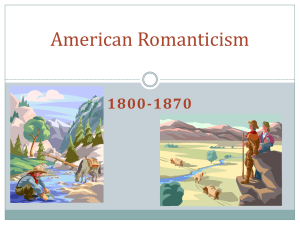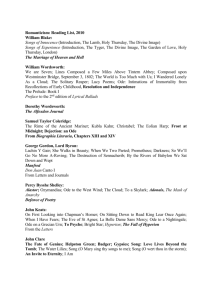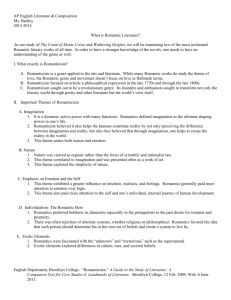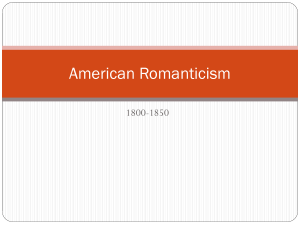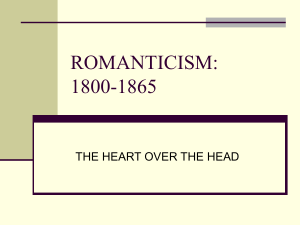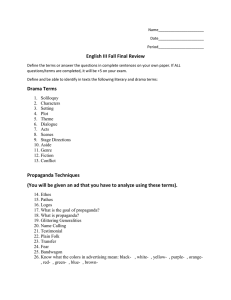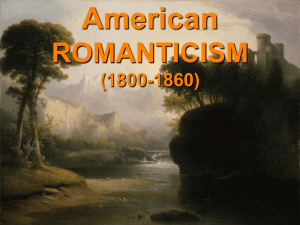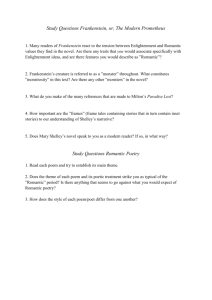Romanticism Defined
advertisement
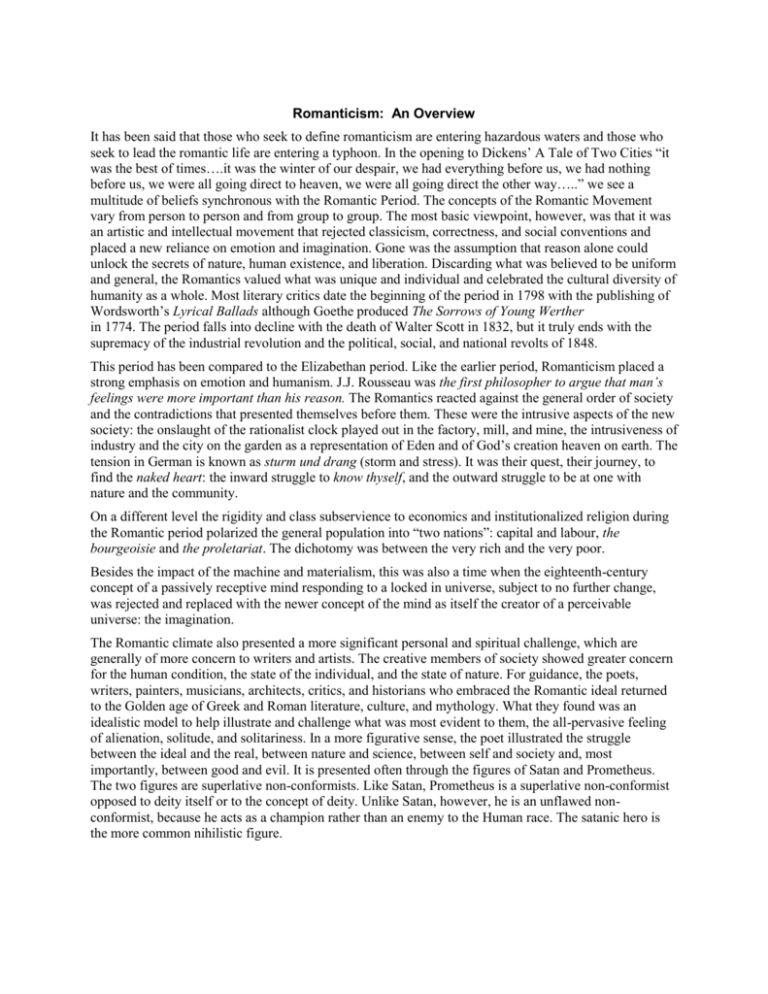
Romanticism: An Overview It has been said that those who seek to define romanticism are entering hazardous waters and those who seek to lead the romantic life are entering a typhoon. In the opening to Dickens’ A Tale of Two Cities “it was the best of times….it was the winter of our despair, we had everything before us, we had nothing before us, we were all going direct to heaven, we were all going direct the other way…..” we see a multitude of beliefs synchronous with the Romantic Period. The concepts of the Romantic Movement vary from person to person and from group to group. The most basic viewpoint, however, was that it was an artistic and intellectual movement that rejected classicism, correctness, and social conventions and placed a new reliance on emotion and imagination. Gone was the assumption that reason alone could unlock the secrets of nature, human existence, and liberation. Discarding what was believed to be uniform and general, the Romantics valued what was unique and individual and celebrated the cultural diversity of humanity as a whole. Most literary critics date the beginning of the period in 1798 with the publishing of Wordsworth’s Lyrical Ballads although Goethe produced The Sorrows of Young Werther in 1774. The period falls into decline with the death of Walter Scott in 1832, but it truly ends with the supremacy of the industrial revolution and the political, social, and national revolts of 1848. This period has been compared to the Elizabethan period. Like the earlier period, Romanticism placed a strong emphasis on emotion and humanism. J.J. Rousseau was the first philosopher to argue that man’s feelings were more important than his reason. The Romantics reacted against the general order of society and the contradictions that presented themselves before them. These were the intrusive aspects of the new society: the onslaught of the rationalist clock played out in the factory, mill, and mine, the intrusiveness of industry and the city on the garden as a representation of Eden and of God’s creation heaven on earth. The tension in German is known as sturm und drang (storm and stress). It was their quest, their journey, to find the naked heart: the inward struggle to know thyself, and the outward struggle to be at one with nature and the community. On a different level the rigidity and class subservience to economics and institutionalized religion during the Romantic period polarized the general population into “two nations”: capital and labour, the bourgeoisie and the proletariat. The dichotomy was between the very rich and the very poor. Besides the impact of the machine and materialism, this was also a time when the eighteenth-century concept of a passively receptive mind responding to a locked in universe, subject to no further change, was rejected and replaced with the newer concept of the mind as itself the creator of a perceivable universe: the imagination. The Romantic climate also presented a more significant personal and spiritual challenge, which are generally of more concern to writers and artists. The creative members of society showed greater concern for the human condition, the state of the individual, and the state of nature. For guidance, the poets, writers, painters, musicians, architects, critics, and historians who embraced the Romantic ideal returned to the Golden age of Greek and Roman literature, culture, and mythology. What they found was an idealistic model to help illustrate and challenge what was most evident to them, the all-pervasive feeling of alienation, solitude, and solitariness. In a more figurative sense, the poet illustrated the struggle between the ideal and the real, between nature and science, between self and society and, most importantly, between good and evil. It is presented often through the figures of Satan and Prometheus. The two figures are superlative non-conformists. Like Satan, Prometheus is a superlative non-conformist opposed to deity itself or to the concept of deity. Unlike Satan, however, he is an unflawed nonconformist, because he acts as a champion rather than an enemy to the Human race. The satanic hero is the more common nihilistic figure.
